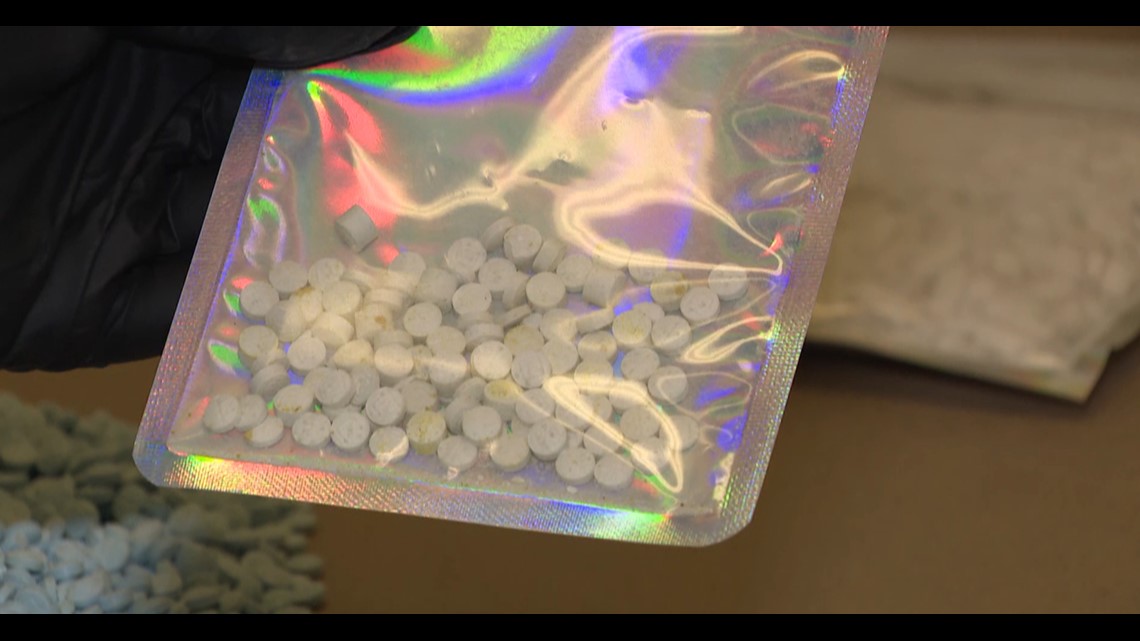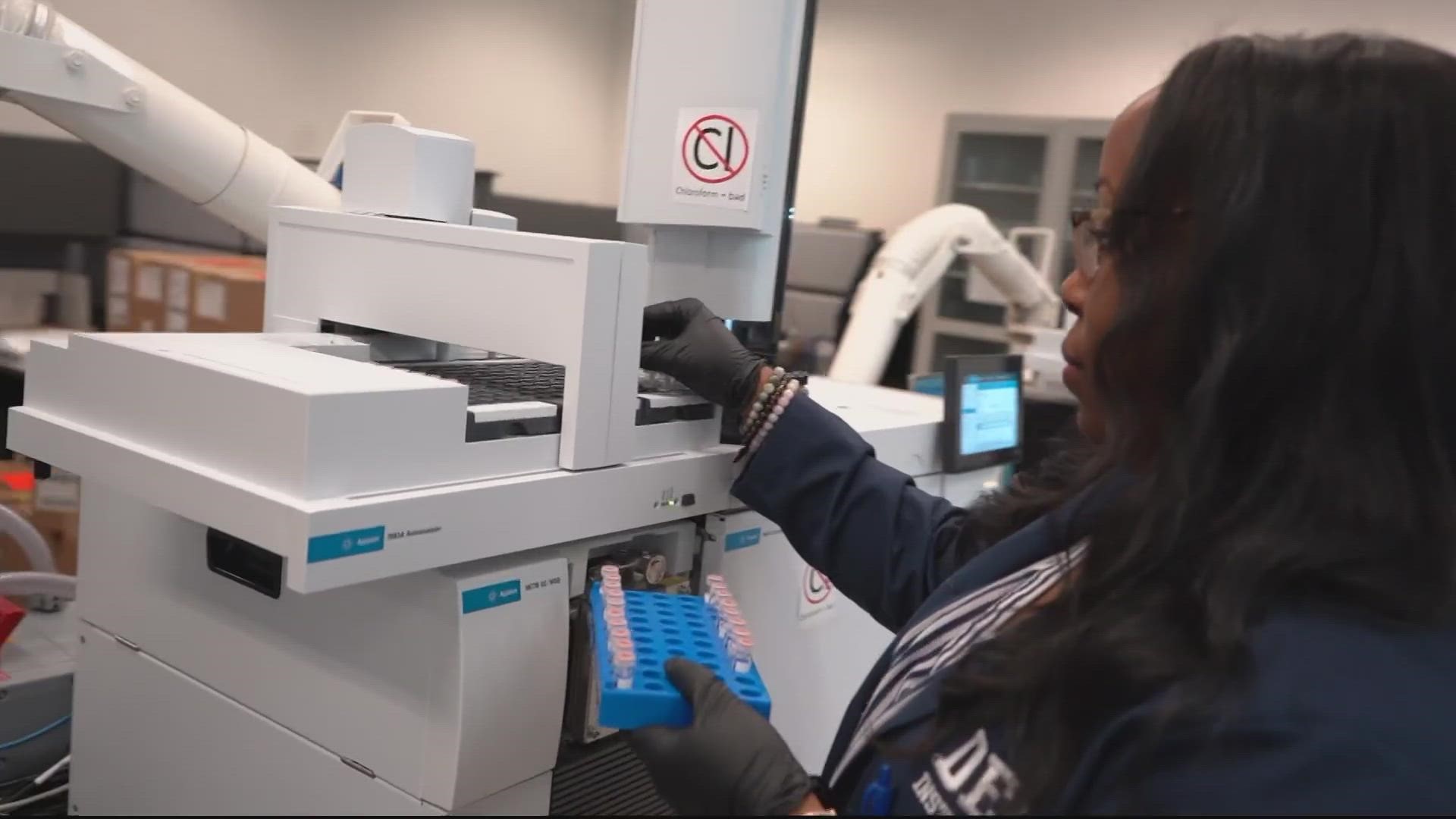WASHINGTON — As youth overdoses become top of mind for many families across the region, enforcement and prevention have ramped up among federal officials.
The Drug Enforcement Administration seized more than eight million potentially doses of fentanyl in 2022. That equates to roughly 160,000 fake pills and more than 250 pounds of powder. Fentanyl is a highly synthetic opioid driving up the number of deadly overdoses across the country, including the DMV.
The biggest contributing factor is the counterfeit pills, which DEA agents seize on a daily basis, according to DEA Special Agent in Charge Jarod Forget.
“We're finding that six out of every 10 pills have a deadly amount of fentanyl,” Forget told WUSA9. “It only takes two milligrams to kill somebody.”
Forensic chemists at the DEA Washington Division lab in Maryland have been busy around the clock testing recently seized drugs.
Chemist Jaclyn Brown said it usually takes within hours to tell if the drugs are laced with fentanyl, requiring taking samples, placing them in vials and processing through their instruments.
In a recent visit to the lab, Brown showed WUSA9 examples of how deceiving some of the drugs look. She showed t versions of fake Oxycodone, two with different shades of blue and one batch that is white. They all look similar to the real deal, but they are quite the opposite.
She also presented one bag of fake Xanax bars.
“Unfortunately, there is no way to know what the pill you're buying illicitly is containing,” Brown said. “We have seasoned chemists who have been on the bench for 20 years who can't tell the difference.”
Each pill contains roughly up to 2% of fentanyl, enough to kill someone.
Chemists say their workload has increased the last two years, with fake pills dominating their workload. The most common type of drug to come through their labs currently is M30’s or Oxycodone.


To help with the efforts, the DEA has launched its ‘One Pill Can Kill’ campaign.
“Our work has definitely ramped up, part of that is the DEA's Operation One Pill Can Kill, so we're trying to get the pills off the street,” Brown added. As they come in, we're getting more and more samples to analyze.”
Although it’s unclear how many of the drugs found involved juveniles, the number of youth overdoses across the region has been concerning.
Montgomery County officials recently announced there were 48 overdoses among people 21 or younger in 2022, 11 of which were fatal. Compared to 2021, there were 27 overdoses and five fatalities.
Police are investigating a suspected overdose at Kennedy High School recently. Since the start of the school year, MCPS says officials used the opioid overdose reversal drug Narcan at least 11 times.
Arlington Police also began investigating a possible drug overdose at Wakefield High School after a student was found unconscious in a bathroom. School had to be dismissed early.
Another teenager overdosed inside Eastern View High School in Culpeper.
“These fake pills are out in the community and people are dying,” Forget said. “It's easier to make, cheaper to make and more marketable for the cartels, and it’s highly addictive.”
Drug administration officials are also sending a warning for parents to be on the lookout. Drug cartels have capitalized on social media to market to children.
Using coded language and emojis, kids can obtain dangerous amounts of fentanyl without realizing it.
“The cartels are using online platforms such as Snapchat, Instagram, and TikTok to market these fake pills to young people that are unknowingly purchasing these pills,” Forget added. “They're trying to drive the addiction. they're trying to create a new customer base.”
For the second year, the Washington Division was also selected to participate in the national initiative Operation Engage. The DEA says it’s “a comprehensive approach tackling the cycle of violence and addiction generated by the link between drug cartels, violent gangs, and the rising problem of illicit drug use in United States (U.S.) cities.”
This year the program is in D.C. and Prince George’s County.

